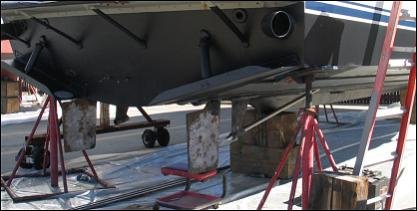Boatgm
Senior Member
- Joined
- May 3, 2012
- Messages
- 102
- Location
- Guam / Manila
- Vessel Name
- Carabao
- Vessel Make
- Home built power tri
Haven’t been in 30/35 foot sea with this boat, but I am ok in 20/25 feet of very confused china sea slop. I have also spent some big sea time at sea anchor which went very well. Loaded with a ton of fuel and a few tons of school books I can run 17 knots at >1 liter/nm. I have lots of data in this 400 mile a day range. At fast Idle the speed is 8 to 10 kts. My floscan is not very accurate at this speed but it’s just sips - it’s hard to get good data off the dip stick and I just haven’t taken the time to set up a proper test. I do know that with the get home (9.9hp outboard) in ideal conditions (light boat flat sea) I can get 6+ knots. I know this type of boat is not for everyone but it fits my needs. I have worked with Chuck Neville on this and other projects and we coined the term “Adventure Platform” for this type of boat. No head room but great air con.






